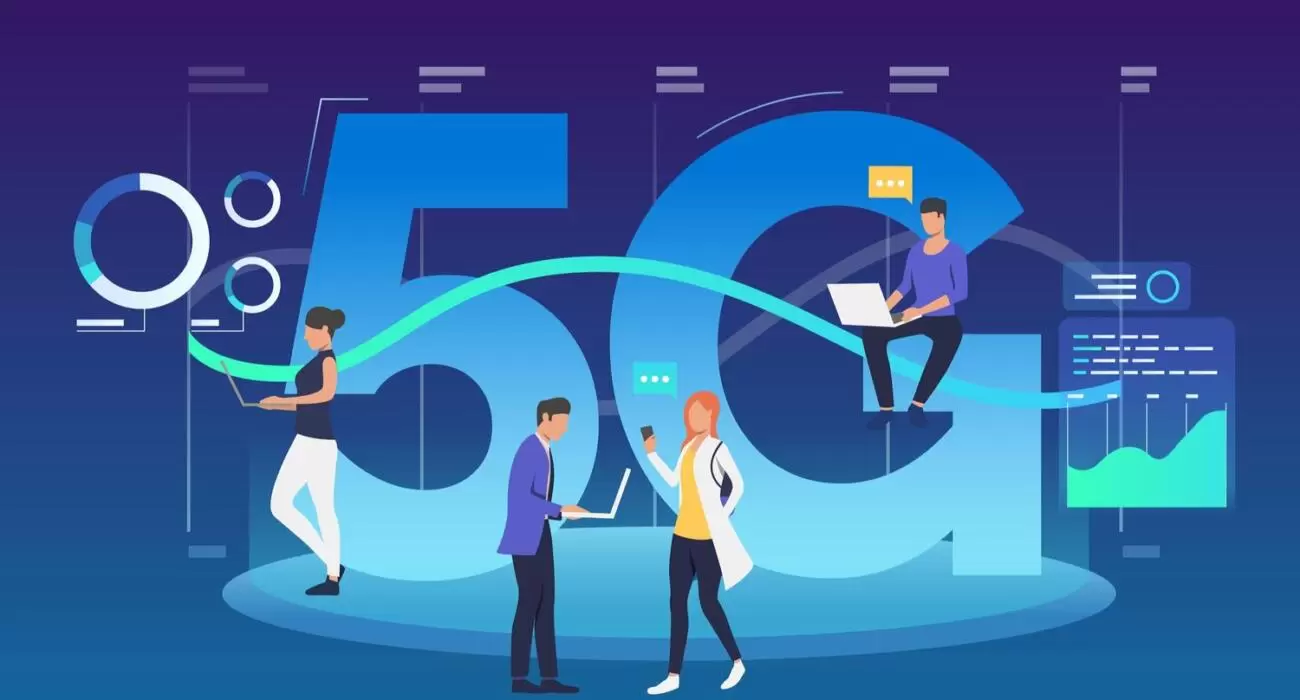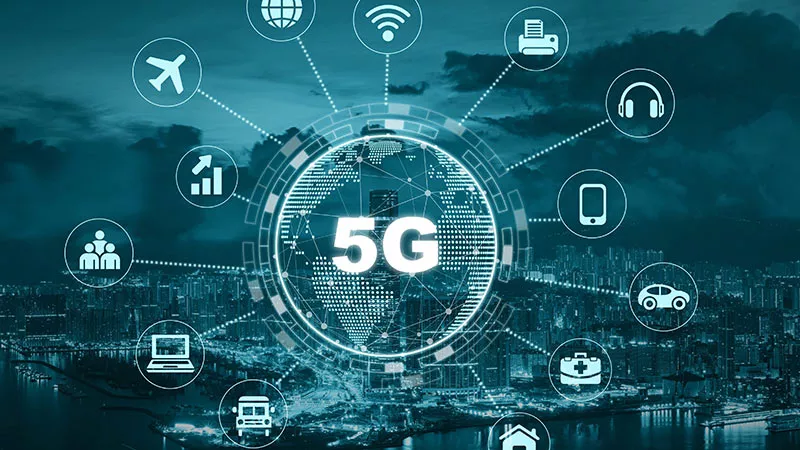The Potential Disadvantages of 5G Technology
5G technology is the fifth generation of mobile network technology, which provides faster data speeds, lower latency, greater capacity, and improved reliability compared to previous generations of mobile networks. In addition to all its benefits, however, it has some disadvantages. Here are some of its drawbacks:
Potential drawbacks of 5G technology

Limited Coverage
One of the potential drawbacks of 5G technology is limited coverage. 5G networks require a significant amount of infrastructure to be built out, including new cell towers, small cells, and other equipment. This infrastructure needs to be deployed in a dense and interconnected manner to provide the required coverage and capacity for 5G networks.
However, building this infrastructure is complex and expensive. In addition, the coverage may be limited in some areas, especially in rural or remote locations. This could result in a digital divide, where people in urban areas can access high-speed 5G networks while those in rural areas have limited access.
Limited coverage could have several implications, including:
1. Unequal access to services
Limited coverage could result in unequal access to services and opportunities for people in different areas, exacerbating existing inequalities.
2. Slower adoption of new technologies
Limited coverage could also slow the adoption of new technologies and applications that require high-speed, low-latency connections.
3. Reduced economic growth
Limited coverage could also impact economic growth, particularly in rural areas where access to high-speed networks is critical for attracting businesses and investment.
To address the issue of limited coverage, governments, and telecommunication companies are working on expanding 5G infrastructure to more areas. This includes initiatives to build infrastructure in rural areas and efforts to share infrastructure and reduce costs through partnerships and collaborations. However, building out 5G infrastructure is a complex and ongoing process that will likely take years to complete.
Higher cost
Another potential drawback of 5G technology is that it could be more expensive than previous generations of mobile networks. This is because 5G networks require significant investment in infrastructure, including new cell towers, small cells, and other equipment, as well as ongoing maintenance and upgrades.
The higher cost of 5G technology could have several implications, including:
1. Higher prices for consumers
The cost of building and maintaining 5G networks could be passed on to consumers through higher prices for mobile plans and devices.
2. Slower adoption of new technologies
The higher cost of 5G technology could slow the adoption of new technologies and applications that require high-speed, low-latency connections, particularly in regions with lower levels of economic development.
3. Reduced profitability for telecommunication companies
The higher cost of 5G infrastructure could impact the profitability of telecommunications companies, particularly if they cannot pass on the cost to consumers.
To address the issue of higher costs, governments and telecommunication companies are exploring a range of solutions, including:
1. Public-private partnerships and cost-sharing initiatives
Governments can partner with telecommunications companies to share the cost of building 5G infrastructure.
2. Regulatory measures
Governments can implement regulatory measures to encourage competition and reduce the cost of building and maintaining 5G networks.
Overall, the higher cost of 5G technology is a potential drawback that must be addressed through various solutions. While the cost of building out 5G infrastructure is high, the potential benefits of 5G technology, such as faster data speeds, lower latency, and greater capacity, make it a worthwhile investment for many governments and telecommunications companies.
Security concerns
Security concerns are another potential drawback of 5G technology. With the increased capacity and connectivity of 5G networks, there are concerns that they could be more vulnerable to cyber-attacks and other security threats.
Here are some of the key security concerns associated with 5G technology as well as suggestions to deal with them:
1. Increased attack surface
With more devices and endpoints connected, 5G networks could offer a larger attack surface for cybercriminals to exploit. To address this problem, 5G networks must use advanced encryption and authentication protocols to protect data and prevent unauthorized access.
2. Greater complexity
5G networks are more complex than previous generations of mobile networks, which could make them more difficult to secure. To address this issue, 5G networks can be segmented to isolate critical applications and services from the rest of the network, reducing the impact of cyber attacks.
3. Supply chain risks
The global supply chain for 5G infrastructure and devices is complex. It involves many vendors and manufacturers, which could increase the risk of security vulnerabilities. To address such problems, governments, and telecommunication companies are working to improve supply chain security for 5G infrastructure and devices.
4. Lack of standardization
There is currently a lack of standardization for 5G security, which could make it difficult to develop consistent security protocols across different networks and devices. It is recommended that Efforts be underway to develop and implement standardized security protocols for 5G networks.
5. Potential for state-sponsored attacks
There are concerns that 5G networks could be targeted by state-sponsored cyber attacks, which could have significant geopolitical implications.
Overall, while security concerns are a potential drawback of 5G technology, efforts are underway to address these concerns and ensure that 5G networks are as secure as possible.
Health concerns

There has been some debate around potential health concerns related to 5G technology. However, no conclusive evidence supports the notion that 5G technology harms human health.
One of the concerns is that the electromagnetic radiation emitted by 5G networks could harm human health. However, the radiation emitted by 5G networks is similar to that of previous generations of mobile networks and is well below the levels considered harmful by international standards.
Another concern is that deploying 5G infrastructure, including cell towers and small cells, could increase exposure to electromagnetic radiation. However, the radiation levels emitted by these infrastructure elements are also well below the levels considered harmful by international standards.
While no conclusive evidence supports the notion that 5G technology harms human health, ongoing research is being conducted to explore potential health impacts. Governments and telecommunications companies are also working to ensure that 5G infrastructure is deployed to minimize potential risks to human health.
Overall, while there are some concerns related to the potential health impacts of 5G technology, the evidence suggests that 5G networks are safe for human use. As with any new technology, ongoing research and monitoring will be necessary to identify and address potential risks promptly.
Interference with other technologies
Another potential drawback of 5G technology is that it could interfere with other technologies, particularly those that use the same frequency bands. This is because 5G networks use high-frequency bands, which can be more prone to interference than lower-frequency bands.
Here are some of the key technologies that could be affected by interference from 5G networks:
1. Satellite communications
Satellite communications use some of the same frequency bands as 5G networks, which could lead to interference and impact the reliability of satellite communications.
2. Radio astronomy
Radio astronomy uses very sensitive equipment to detect radio signals from space. The high-frequency bands used by 5G networks could interfere with these signals and impact the ability of astronomers to conduct research.
3. Weather forecasting
Weather forecasting relies on radio frequencies to collect data from satellites and other sources. The high-frequency bands used by 5G networks could interfere with these signals and impact the accuracy of weather forecasts.
To address these concerns, governments, and telecommunications companies are working to ensure that 5G networks are deployed to minimize interference with other technologies. This includes:
1. Collaborating with other stakeholders
Governments and telecommunications companies are working with other stakeholders, such as satellite operators and astronomers, to identify and mitigate potential interference issues.
2. Sharing frequency bands
Efforts are underway to share frequency bands between different technologies to minimize interference and maximize efficiency.
3. Developing new technologies
Researchers are exploring new technologies and techniques, such as beamforming, that could help to minimize interference and improve the reliability of 5G networks.
While interference with other technologies is a potential drawback of 5G technology, efforts are underway to address these concerns and ensure that 5G networks can coexist with other technologies to maximize their benefits while minimizing any potential negative impacts.
Challenges of Implementing 5G Technology in Developing Countries
Implementing 5G technology in developing countries can present several challenges, including:
1. Infrastructure
Developing countries may lack the necessary infrastructure to support 5G technology. This includes fiber optic cables, cell towers, and other equipment needed to support 5G networks.
2. Cost
Implementing 5G technology can be expensive, and developing countries may not have the financial resources to invest in the necessary infrastructure and equipment.
3. Spectrum availability
The availability of spectrum can be an issue in developing countries, as the limited availability of spectrum can make it difficult to deploy 5G networks.
4. Regulatory challenges
There may be regulatory challenges around spectrum allocation, licensing, and standards adoption in developing countries, which can slow down the deployment of 5G networks.
5. Digital divide
Developing countries may also face challenges related to the digital divide, with some areas lacking access to basic telecommunications infrastructure. This can make it difficult to deploy 5G networks in a way that ensures widespread coverage.
6. Security and privacy
Implementing 5G technology also poses challenges related to security and privacy. Developing countries may lack the necessary cybersecurity expertise and resources to ensure the security of their 5G networks.
Overall, implementing 5G technology in developing countries can present significant challenges. Still, it also has the potential to bring significant benefits, such as improved connectivity, economic growth, and access to new services and technologies. It will require a concerted effort from governments, telecommunications companies, and other stakeholders to address these challenges and ensure that the benefits of 5G technology are realized in developing countries.
Final Word
Overall, the potential benefits of 5G technology are significant, but there are also potential drawbacks that need to be considered. As with any new technology, it is important to carefully weigh the benefits and risks before making decisions about its deployment and use.

